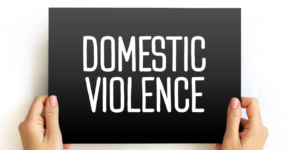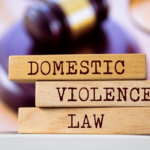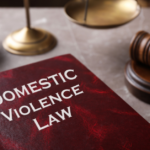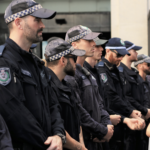Reducing Domestic Violence Offences: Are Governments On the Right Track?

Domestic violence is a topic that people shy away from talking about – but it is a rampant epidemic that is sweeping the entire country.
Women, children, and men are suffering at the hands of abusive partners in their households and looking for a way to escape. But are initiatives such as legislation doing enough to protect the vulnerable>
Turns out, the new programs, payments, and initiatives might not be doing enough to stop, or even slow down, the prevalence of domestic violence offences in Australia.
The Case
A man has been charged with the murder over the death of his female former partner who was residing on Ocean Parade, Coffs Harbour in Northern New South Wales.
Emergency services and police arrived at the residence at 5:25 pm on Wednesday, 2 October 2024, subsequently taking the 58-year-old woman to Coffs Harbour Base Hospital for treatment.
After establishing a crime scene, investigating the circumstances, and conducting inquiries, a 30-year-old man was arrested in Park Ridge, in Brisbane’s south in Queensland. The man is said to have had outstanding warrants and faced the Brisbane Magistrate Court on Monday, 7 October 2024, where the New South Wales Police were granted an extradition order.
The woman died in the hospital on the same day. The man was subsequently taken to Tweeds Head Police Station and charged with the offence of murder, domestic violence related, which carries a maximum penalty of life in prison.
The Grim Reality of the Counting Dead Women Project
The Counting Dead Women project is one of a few government-backed initiatives that have tried to curb the ever-present issue of domestic violence in the country as a whole. But, like other police and government programs, the project has drawn attention to the national issue, but might not have the funding, backing, or resources needed to stop the root cause of domestic violence.
Since its inception over a decade ago, this project took on the task of documenting femicide in Australia. The organisation keeps a register of women killed by violence that continually grows each week, indicating that there is a lack of public awareness and government immediacy regarding the severity of the problem.
Last year, The Lost Petition was placed on the steps of the Victorian State Parliament, documenting nearly 1,100 names of women and children who have lost their lives to gendered violence. In one week in May of this year, four men were reportedly murdered — in just seven days.
This goes to show that despite bringing more awareness to the serious concerns over gendered violence towards families, women, and children, male aggression and criminal offences in the court system have shown no sign of slowing down. Part of the reason behind the overly lax attitude towards male-based violence towards women is rooted in the old-school ways that Australian society collectively thinks.
Australia has a ‘traditional’ macho, manly, and male-focused narrative, while women are still often seen as the instigators when it comes to sexual violence. If a woman is attacked or sexually assaulted, society first turns to what the woman was doing to warrant such an act from a man.
Furthermore, the men that we think of who commit these horrific acts aren’t “obvious” criminals or already-convicted offenders. They can be an AFL player, local barista, uncle, or best friend from university. Admitting the flaws in Australian culture and figuring out ways to change the old-rooted viewpoints is essential to protecting women — and truly aiding the Counting Dead Women project.
Government Initiatives to Curb Domestic Violence
The Government has made an effort to fund new initiatives and programs that provide resources, support, and financial help to victims of domestic violence – or help prevent DV altogether. But, the impact of the programs might not be doing enough to slow down the rates of intimate partner violence.
Leaving Violence Payment
One of the newest ways that the Australian Government is trying to help domestic violence victims leave their unsafe premises is to offer a financial incentive to women and their children.
A ‘leaving violence payment’ of $5,000 is for women and their children who need support, services, guidance, and tools to leave an abusive partner and then reintegrate into society. The Australian Commonwealth stated that it would also focus on helping victims of deep fake pornography, revenge pornography, and violent online content depicting minors.
However, this payment project has yet to take off. The start date isn’t until the middle of 2025, citing a lack of concern about the acuteness of the rampant problem in the country. The new project follows a previous trial program that has been running since 2021, with the aim of having broader entry requirements.
The chief executive of Domestic Violence NSW, Donovan, has noted that despite the appearance of helping domestic violence escapees create a new life, a vast majority of those who applied for the escaping violence program were not admitted — not only leaving them financially insecure, but also putting them at risk of their partner finding out their intentions.
Donovan stated that she was ‘frustrated (that the announcement) does very little to address the current emergency. Services are unable to meet demand, resources are over-stretched, and women are being murdered.’
National Plan to End Violence against Women and Children 2022-2032
The Australian state and territory governments released this national plan on 17 October 2022 to end violence against women and children. The plan included how aspects of society could be changed to recognise signs of violence and how all parts are interconnected in ending gender-based violence within a single generation.
In May, $1 billion was redirected as part of this plan to the National Housing Infrastructure Facility to help with accommodation for women and their children leaving abusive households. The $1 billion is a supplement to the nearly-$10 billion to help solve the problem of homelessness in the country.
Despite throwing more money at the problem, key findings have shown that service systems are overworked and overstretched beyond their resource capacity. There needs to be a deeper understanding of what services must be provided and how much funding is needed.
Studies have shown that the following must be addressed in the upcoming years:
- Sustainable crisis services;
- New ways for the Government to fund fast-response services; and
- The Australian Government needs to work with individual states to ensure adherence to the National and Action Plans.
NSW Domestic and Family Violence Plan 2022-2027
In addition to the nationwide initiative to end violence against women and children, New South Wales released a statewide plan spanning five years, beginning in December 2022.
The NSW government passed the Crimes Legislation Amendment (Coercive Control) Act 2022 in November 2022, giving the public some hope that the Government was acting on its previous statement in December 2021 that promised it would pass legislation regarding coercive control in partner relationships.
But the real question is, has it made an impact on society? In Australia as a whole, one woman is killed every 10 days by an intimate partner. More than 2 million women in Australia have experienced violence by a partner since the age of 15 years old.
The NSW legislation can address domestic violence concerns by realising there is no one-size-fits-all solution. An intersectional approach is the most effective way to recognise groups who may be more at risk, such as women, Aboriginal and Torres Strait Islander peoples, and LGBTIQA+ people.
In response to the ever-growing systemic issue, there have been the following:
- Changes to the NSW ADVO system,
- Reforms to the offence of strangulation in the Crimes Legislation Amendment Act 2018,
- Adding a new section to the Criminal Procedure Act 1986, and
- Adding a system-wide infrastructure for domestic and family violence survivors in the Safer Pathway network.
Are the Government Initiatives Working? Maybe Not
Despite the introduction of new initiatives and efforts to slow down the ever-alarming trend of domestic violence in NSW and Australia as a whole, the statistics don’t lie.
Studies and reporting have indicated that police have found disturbing patterns of an increase in domestic violence-related assault and family violence over five, ten, and 15-year periods. The prevalence of intimate partner violence increased to 414.2 per 100,000 people through 2022, an increase of 2.7% in the last five years, 0.8% in the last 10 years, and 0.8% in the last 15 years.
So, how can the Australian Government effectively prevent and stop domestic violence occurrences in the country — and safely help victims after the fact?
Domestic Violence Lawyers
If you have been accused of a domestic violence-related offence, contact Sydney Criminal Lawyers today to arrange a free first appointment with an experienced defence lawyer who will provide you with expert advice and formidable legal representation.






